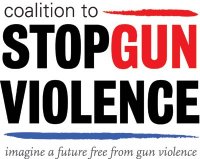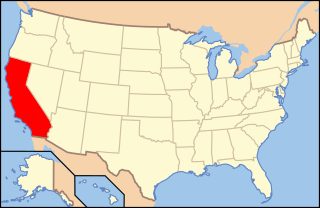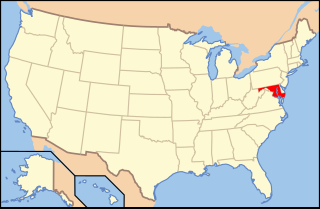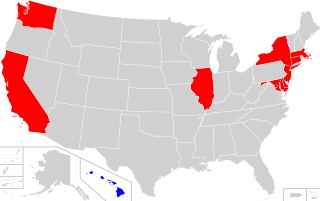Related Research Articles
Gun laws and policies, collectively referred to as firearms regulation or gun control, regulate the manufacture, sale, transfer, possession, modification, and use of small arms by civilians. Laws of some countries may afford civilians a right to keep and bear arms, and have more liberal gun laws than neighboring jurisdictions. Countries that regulate access to firearms will typically restrict access to certain categories of firearms and then restrict the categories of persons who may be granted a license for access to such firearms. There may be separate licenses for hunting, sport shooting, self-defense, collecting, and concealed carry, with different sets of requirements, permissions, and responsibilities.

Gun control, or firearms regulation, is the set of laws or policies that regulate the manufacture, sale, transfer, possession, modification, or use of firearms by civilians.

In the United States, assault weapon is a controversial term used to define firearms with specified characteristics. The definition varies among regulating jurisdictions, but usually includes semi-automatic firearms with a detachable magazine, a pistol grip, and sometimes other features, such as a vertical forward grip, flash suppressor, or barrel shroud. Certain firearms are specified by name in some laws that restrict assault weapons. When the now-defunct Federal Assault Weapons Ban was passed in 1994, the U.S. Department of Justice said, "In general, assault weapons are semiautomatic firearms with a large magazine of ammunition that were designed and configured for rapid fire and combat use." The commonly used definitions of assault weapons are under frequent debate, and have changed over time.

Gun politics is defined in the United States by two primary opposing ideologies concerning the private ownership of firearms. Those who advocate for gun control support increasingly restrictive regulation of gun ownership; those who advocate for gun rights oppose increased restriction, or support the liberalization of gun ownership. These groups typically disagree on the interpretation of the text, history and tradition of the laws and judicial opinions concerning gun ownership in the United States and the meaning of the Second Amendment to the Constitution of the United States. American gun politics involves these groups' further disagreement concerning the role of firearms in public safety, the studied effects of ownership of firearms on public health and safety, and the role of guns in national and state crime.

The Coalition to Stop Gun Violence (CSGV) and the Educational Fund to Stop Gun Violence, its sister organization, were two parts of a national, non-profit gun control advocacy organization opposed to gun violence. Since 1974, it supported reduction in American gun violence via education and legislation. They ceased operations in 2022 after the EFSGV merged with the Johns Hopkins Center for Gun Violence Prevention and Policy to become the Johns Hopkins Center for Gun Violence Solutions.

Brady: United Against Gun Violence is an American nonprofit organization that advocates for gun control and against gun violence. It is named after former White House Press Secretary James "Jim" Brady, who was permanently disabled and later died in 2014 as a result of the Ronald Reagan assassination attempt of 1981, and his wife Sarah Brady, who was a chairwoman of the organization from 1989 until her death in 2015.
The Violence Policy Center (VPC) is an American nonprofit organization that advocates for gun control.

Gun violence is a term of political, economic and sociological interest referring to the tens of thousands of annual firearms-related deaths and injuries occurring in the United States. In 2022, up to 100 daily fatalities and hundreds of daily injuries were attributable to American gun violence. In 2018, the most recent year for which data are available, the Centers for Disease Control and Prevention's (CDC) National Center for Health Statistics reported 38,390 deaths by firearm, of which 24,432 were suicides. The national rate of firearm deaths rose from 10.3 people for every 100,000 in 1999 to 11.9 people per 100,000 in 2018, equating to over 109 daily deaths. In 2010, there were 19,392 firearm-related suicides, and 11,078 firearm-related homicides in the U.S. In 2010, 358 murders were reported involving a rifle while 6,009 were reported involving a handgun; another 1,939 were reported with an unspecified type of firearm. In 2011, a total of 478,400 fatal and nonfatal violent crimes were committed with a firearm.
In the United States, the right to keep and bear arms is modulated by a variety of state and federal statutes. These laws generally regulate the manufacture, trade, possession, transfer, record keeping, transport, and destruction of firearms, ammunition, and firearms accessories. They are enforced by state, local and the federal agencies which include the Bureau of Alcohol, Tobacco, Firearms and Explosives (ATF).
District of Columbia v. Heller, 554 U.S. 570 (2008), is a landmark decision of the Supreme Court of the United States. It ruled that the Second Amendment to the U.S. Constitution protects an individual's right to keep and bear arms—unconnected with service in a militia—for traditionally lawful purposes such as self-defense within the home, and that the District of Columbia's handgun ban and requirement that lawfully owned rifles and shotguns be kept "unloaded and disassembled or bound by a trigger lock" violated this guarantee. It also stated that the right to bear arms is not unlimited and that certain restrictions on guns and gun ownership were permissible. It was the first Supreme Court case to decide whether the Second Amendment protects an individual right to keep and bear arms for self-defense or whether the right was only intended for state militias.

Gun laws in California regulate the sale, possession, and use of firearms and ammunition in the state of California in the United States.

Gun laws in New York regulate the sale, possession, and use of firearms and ammunition in the U.S. state of New York, outside of New York City which has separate licensing regulations. These regulations are very strict in comparison to the rest of the United States.

Gun laws in Maryland regulate the sale, possession, and use of firearms and ammunition in the U.S. state of Maryland.

An AR-15–style rifle is any lightweight semi-automatic rifle based on or similar to the Colt AR-15 design. The Colt model removed the selective fire feature of its predecessor, the original ArmaLite AR-15, itself a scaled-down derivative of the AR-10 design by Eugene Stoner.

The Public Safety and Recreational Firearms Use Protection Act, popularly known as the Federal Assault Weapons Ban, was a subsection of the Violent Crime Control and Law Enforcement Act of 1994, a United States federal law which included a prohibition on the manufacture for civilian use of certain semi-automatic firearms that were defined as assault weapons as well as certain ammunition magazines that were defined as large capacity.

Assault weapons legislation in the United States refers to bills and laws that define and restrict or make illegal the manufacture, transfer, and possession of assault weapons. How these firearms are defined and regulated varies from jurisdiction to jurisdiction; generally, this constitutes a list of specific firearms and combinations of features on semiautomatic firearms.

A high-capacity magazine ban is a law which bans or otherwise restricts high-capacity magazines, detachable firearm magazines that can hold more than a certain number of rounds of ammunition. For example, in the United States, the now-expired Federal Assault Weapons Ban of 1994 included limits regarding magazines that could hold more than ten rounds. As of 2022, twelve U.S. states, and a number of local governments, ban or regulate magazines that they have legally defined as high-capacity. The majority of states do not ban or regulate any magazines on the basis of capacity. States that do have large capacity magazine bans or restrictions typically do not apply to firearms with fixed magazines whose capacity would otherwise exceed the large capacity threshold.

A high-capacity magazine is a magazine capable of holding a higher than normal number of ammunition rounds for a particular firearm.
After the Sandy Hook Elementary School shooting, multiple gun laws were proposed in the United States at the federal and state levels. The shooting renewed debate about gun control. The debates focused on requiring background checks on all firearm sales, and on passing new and expanded assault weapon and high-capacity magazine bans.

Miller v. Bonta is a pending court case before Judge Roger Benitez of the U.S. District Court for the Southern District of California concerning California's assault weapon ban, the Roberti–Roos Assault Weapons Control Act of 1989 (AWCA). Judge Roger Benitez struck down the ban in a ruling on June 5, 2021. A three-judge panel of the Ninth Circuit issued a stay of the ruling on June 21, 2021, which left the ban in place as appeals were litigated. The panel then vacated Judge Benitez’s ruling and remanded it back down after NYSRPA v. Bruen was decided. The case was known as Miller v. Becerra before Rob Bonta succeeded Xavier Becerra as Attorney General of California in April 2021.
References
- 1 2 Olinger, David. "War comes home for founder of group fighting for assault weapons ban". Denver Post. Retrieved 23 June 2014.
- ↑ Lourdes, Meluza (1986-03-24). "Release Cuban Activists, Group Urges". Miami Herald.
- ↑ Sugarmann, Josh (1986-03-24). "Progress Gives Us Great New Handgun -- Hijacker Special". Los Angeles Times. Retrieved 23 June 2014.
- ↑ "Josh Sugarmann". Huffington Post. Retrieved 23 June 2014.
- ↑ Carter, Gregg Lee (2012). Guns in American Society: An Encyclopedia of History, Politics, Culture, and the Law, 2nd Edition. ABC CLIO. ISBN 978-0313386701.
- 1 2 "Assault Weapons and Accessories in America". Violence Policy Center. Retrieved 23 June 2014.
- ↑ Blake, Aaron. "Is it fair to call them 'assault weapons'?" . Washington Post. Archived from the original on January 20, 2013. Retrieved 23 June 2014.(subscription required)
- ↑ "National Rifle Assoc (review)". Publishers Weekly. May 4, 1992. Archived from the original on September 24, 2015.
- ↑ Broderick, J (1992-01-01). "Book reviews: Social sciences (Reviews the book NRA: Money, Firepower & Fear, by Josh Sugarmann.)". Library Journal. 117 (1): 155.
- ↑ "Every Handgun Is Aimed at You: The Case for Banning Handguns". Publishers Weekly. March 1, 2001. Retrieved 22 January 2013.
- ↑ Brustman, Mary Jane (April 1, 2001). "Every Handgun Is Aimed at You (Book Review)". Library Journal. 126 (6): 117.
- ↑ Stone, Peter (May 7, 2001). "Lethal Weapons (Reviews three non-fiction books on gun ban. 'Gun Violence: The Real Costs,' by Philip J. Cook; 'Shots in the Dark: The Policy, Politics and Symbolism of Gun Control,' by William J. Vizzard; 'Every Handgun Is Aimed at You: The Case for Banning Handguns,' by Josh Sugarman.)". American Prospect. 12 (8): 46.
- ↑ "Listing of Federal Firearms Licensees". Bureau of Alcohol, Tobacco, Firearms and Explosives. Retrieved 17 November 2017.
- ↑ ERIC LICHTBLAU; RICHARD SIMON (April 18, 2000). "Gun-Control Movement Split by Ambition to Ban Handguns". LA Times. Retrieved 22 January 2013.